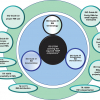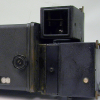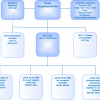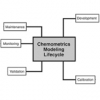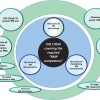Peter J. Jenks BSc, MRSC
The Jenks Partnership, Newhaven House, Junction Road, Alderbury, Salisbury, Wiltshire SP5 3AZ, UK
For much of the last 10 years I’ve been writing, from many and varied perspectives, about reference materials, proficiency testing and all things to do with analytical quality control, or AQC. As might be expected when writing in a journal titled Spectroscopy Europe there has been somewhat of a chemical focus. I am a biochemist, turned analytical chemist, with a strong interest in environmental analysis. As a result my knowledge of microbiology is limited and is based on one semester in year 2 at University and a few weeks in a hospital microbiology laboratory; both were a long time ago.
So what took me to a meeting arranged by the Royal Society of Chemistry’s Water Science Forum entitled “AQC for Microbiological Analysis of Water—Sound Science or Black Art”? More than 60 people took part, almost all from laboratories in the UK responsible for the analysis of water or from the organisations supporting them. I was there, standing in for a sick colleague, to deliver a presentation about Vitroids, a clever way of stabilising bacterial cultures that allows them to meet the demanding requirements of ISO 17025 and Guide 34 and so be classified as certified reference materials and thus a big improvement on traditional freeze dried cultures. I suspect details about CRMs for microbiology are of little or no interest to most chemists but in terms of the evolution of AQC and its application to microbiology they are important, as will become clear.
The stated aim of the meeting was “to look at current AQC best practice and ask whether further guidance is needed on the interpretation of ‘probably out of control’ and ‘definitely out of control’”. The title was interesting enough: to my chemically processed brain AQC is either in or out of control, there is no room for grey. What really got me thinking was how the microbiologists looked at quality control and statistics. As most of us know anything that can be described as an AQC failure in an ISO 17025 accredited chemical analytical procedure will result in some sort of investigation and corrective action, the depth and intensity dependant on the scale of the failure. But in the microbiology world it seems things are a little different. There is an investigation, but it is up to the responsible analyst to use judgement and experience to decide whether it is a justifiable non-conformance and can be overlooked or if it is not justified and a corrective action is needed. How can that be?
The first real eye opener came during a presentation by David Sartory. In the process of reviewing the “state of the art” of microbiology AQC and musing on where AQC in water microbiology needed to go, he contrasted the analytical challenges associated with chemistry and microbiology analysis. In particular he compared two 10 mL samples of water, one sent to the inorganic lab for trace metal analysis and the other to the microbiology lab for analysis of coliform contamination. In the sample sent for chemical analysis the analyst looking for a typical heavy metal, for example lead with an expected level of 50 µg L–1, has more than 11 quadrillion (1015) ions in the sample to find and measure. Should be easy, the ions are all exactly the same and share the same immutable properties. In the microbiology lab the challenge is to find, possibly, 30 cells. The cells may be alive, dead or just resting; all behave differently. Like all living things their behaviour, whilst understood, cannot always be predicted. This comparison significantly increased my respect for analytical microbiologists!
So how does a microbiology analyst decide what is definitely in control, probably in control (a grey area), probably out of control (a grey area), and definitely out of control? And how on earth can this level of imprecision be acceptable: how can “probably in control” and “probably out of control” be defined? Consider the following comparisons which highlight how different it is in microbiology.
In chemistry the 10 mL sample mentioned previously is normally a sub-sample, taken from a larger sample of perhaps 500 mL collected by the site sampler. So if the analytical result is suspect all the analyst has to do is re-mix the original sample and take another 10 mL sub-sample for re-analysis, confident that as the original sample is homogeneous the probability is that the 11 quadrillion ions in sample 2 will be exactly the same as the 11 quadrillion in sample 1 and therefore the second analysis will be a true repeat.
Microbiology is different, there is usually no opportunity to repeat or re-run a microbiological analysis. With so few cells in a sample it is not possible to take a second sub-sample that has a very high probability of being the same as the first. It may have the same number of cells, but they may no longer be viable. Most microbiology analysis depends on living cells responding. Yes, there are efforts to look at DNA, but that poses problems: live and dead cells have the same DNA, but dead cells are of no interest, from a public health perspective. So in microbiology there is a need for total quality management and a “right first time” mentality.
Microbiology has other “risks”, common to chemistry but because samples cannot be re-run of much greater significance. Consider the following: catastrophic equipment failure, deterioration of the media, failure of a positive control, failure of a blank sample, failure of a negative control. Instruments fail, it happens, media or columns degrade with time, controls and blanks can give unexpected results. But the use of negative controls is not common in analytical chemistry. Why is it needed in microbiology? Well, in many types of water analysis the ideal result is to detect nothing. So the microbiologist needs negative controls to guard against false negatives which are possibly more serious than false positives. Why is this?
Critical analysis where the material to be analysed contains living organisms and for which the ideal result is no cells, not “not detected” is an uncommon challenge. In many public health mandated microbiology analysis the minimum limit of detection, zero viable cells or colony forming units, is the same as the ideal result. So the analyst is faced with a challenge rather like the paradox of Schrödinger’s Cat! In 1935 Erwin Schrödinger described a scenario where a cat might be alive or dead, depending on an earlier random event. The water microbiologist has to deal with a similar paradox in that the cells of interest might be live or dead, depending on an earlier random event, and that the consequences of this random event have a significant impact on the utility of the data developed by the analysis. So the need for robust controls that highlight false negatives and false positives is very significant.
Whatever the type of AQC failure it must be investigated and the impact assessed. The system of investigation must be robust and should include a decision tree to provide a formal route between acceptance and rejection of the results of the investigation. Even so the skills and judgement of the analyst form a vital part of any investigation and subsequent assessment. In this respect the level of experience and training required of a microbiology analyst seem to be greater than for a chemist.
Although the use of CRMs for calibration and method validation have been commonplace in many areas of metrological science for many years it is only very recently that it has been possible to source CRMs that are certified for the number of colony forming units of a particular bacteria. To produce such a CRM the manufacturer has to conform to all the requirements of ISO 17025 and ISO Guide 34 and in particular meet all the stability and homogeneity requirements. Doing so with living cells poses much a greater challenge than when producing a conventional CRM in which ions or molecules are dispersed in a solution or solid matrix. When certifying conventional CRMs there are only two variables, identity and amount of substance. For cellular CRMs there are three variables, identity, number of cells and viability. A microbiological CRM that contains only dead cells is of no use what so ever.
In chemistry, as has already been made clear, the analysis of a CRM certified for Lead requires an analysis of a large number of ions in solution. In microbiology the task is to analyse the dispersion of a much smaller number of organisms in a sample. A recent lot of a Vitroid CRM with a nominal 200 cfu (colony forming units) of E. coli had a Certified value of 169 ± 32.1 cfu, a number independent of the volume of liquid. With such a small absolute number of determinants batch to batch variation can be significant, even if in absolute terms are small: the Certified value for second lot of the same CRM was 160 ± 19.8 cfu and so the variation is just nine units, but this is actually a remarkably good result with a difference between lost of only 5%.
In conclusion, the objective must be the same level of confidence in microbiology AQC as in chemistry AQC. Given all the additional and, from a chemist’s perspective, unusual variables it does seem that whilst not a “black art” the soundness of the science needs to be of a high order and to generate reliable AQC over a long term. Much microbiology is only semi-automated and the “detector” is still the trained eye of a scientist. So in microbiology there is a continuing need for scientists that are well trained, have robust experience and are able and willing to make decisions.
Acknowledgements
My thanks to Mrs Claire Stacey of the RSC Water Science Forum for inviting me to the meeting.


